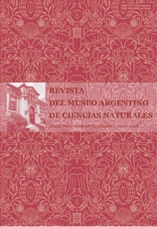Modificaciones morfológicas inducidas por Tetradiplosis panghitruz Martínez (Diptera: Cecidomyiidae) en tallos de Prosopis caldenia Burkart (Fabaceae)
Resumen
Morphological modifications induced by Tetradiplosis panghitruz (Diptera: Cecidomyiidae) in stems of Prosopis caldenia Burkart (Fabaceae). Representatives of a recently described species of Tetradiplosis Kieffer & Jörgensen (Diptera: Cecidomyiidae) induce galls in stems of Prosopis caldenia Burkart (Fabaceae). The modifications on plant tissues during the development of the gall were studied, as well as their relationship with the life cycle of the inducer. Galls were collected in a field belonging to the Universidad Nacional de La Pampa, Santa Rosa, La Pampa, Argentina. In summer, females of Tetradiplosis panghitruz lay their eggs individually on the epidermis of stems developed in the previous spring. Eggs hatch and larvae move through the egg corion and the stem epidermis to penetrate the internal tissues of the stem. The first modification induced by the larvae is the increased size of cells in the cortical parenchyma. Once inside the stem, the larva induces the formation of a cell chamber in the xylem. Galls induced by T. panghitruz are uni, bi, or plurilocular with a single larva per chamber. Immature stages of the gall inducer develop entirely inside the gall. The plant tissue which undergoes the most significant modifications during gall formation is the secondary xylem. The main body of the gall is composed by anomalous xylem, strata of sclerenchymatic xylem cells which constitute the chamber walls, and nutritive cells which are in contact with the larva.
Texto completo:
PDFEnlaces refback
- No hay ningún enlace refback.

This work is licensed under a Creative Commons Attribution 3.0 License.

